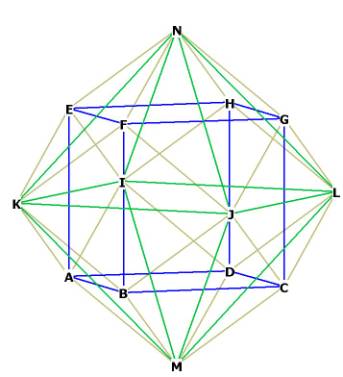|
(2017
midterm assignment) Model Student Midterm answers 2016 (Index) Essay 3: Web Highlights |
 |
Tanner House
11/6/17
The Disconnect of Interconnected Futures
When studying the three variations of the narratives of the future that
are the subjects of this course, I was immediately drawn to the parallels and
similarities present in these narrative structures. Despite their distinctions,
the narratives of the future are all remarkably compatible, a sentiment
reflected in Nikki Jones’ 2016 essay “The Three Narratives: Hand-in-Hand”.
Through defining and exploring the individual narrative, Jones asserts that
despite often predominantly falling into a single category, aspects and elements
of each narrative can be found all across the texts covered throughout the
semester, and that despite the distinctions present in the narrative styles they
all share some inherent value by simply being narratives of the future, an idea
I explored in my own essay. Jones writes “These three genres may sound like they
are completely separate concepts, and they very well can be written as such;
however, more often than not readers will find that the concepts for these
genres overlap and mesh together within their stories. Also, many symbols or
themes that are common to one subgenre can easily be utilized in another.
Examples of these storylines and symbol exchanges can be found in some of the
future presentations we have seen, but mainly they lie in the required class
texts we have read so far.” I completely agree with this observation, as it is
an observation I myself made independently of my knowledge of Jones’ essay.
As much as I enjoyed and agreed with Jones’ essay, I found myself far
less enthusiastic about a number of the other submissions and models. I have
performed a similar exercise in another of Professor White’s courses, and I
found there that I almost universally agreed with the arguments and contentions
of past students. That was not the case for this exercise, but I think that this
degree of subjectivity highlights the importance of literature of the future and
the discourse that surrounds it. The future is a highly subjective and highly
speculative topic, and so it makes sense that there is such a varied and
seemingly contradictory index of responses.
In reviewing the sample essays of past semesters, I was rather surprised
to find a selection which I very strongly disagreed with. Liz Davis’s essay
“Three Tales of Fear” contends that “People always wonder why science fiction is
so popular. The nerds love to read it, the general population loves to watch it
and scientists love to imitate it. It has a strong influence on society but why?
It is because as a race we are scared of the future and the things it can hold.”
Davis’s preoccupation with the idea of a fear of the future being one of the
predominant themes in the literature of the future ultimately weakens her
argument, and the purpose of literature of the future as a whole. Yes, fear does
play a large role in conception of literature of the future, and is one of the
driving forces of exploration and discovery, but to simply say that “Evolution
is a scary thing” grossly undermines the discourse of the evolutionary
narrative. Evolution can certainly be construed as a frightening force which
often seems beyond the realm of comprehension, but to discuss it in such terms
discredits the marvel of its process.
Another essay that I found to be problematic was Melissa Holesovsky’s
“Could it Happen?” Holesovsky’s essay opens “While the genre of science fiction
has always been unappealing to me, save Star Wars, I have returned to the same
question again and again: Could it happen?”, and immediately presents a
misunderstanding of the genre of science fiction and the narratives of the
future. Star Wars is not, in any sense or fashion, science fiction. It is a
spaghetti western space opera that takes place “a long, long time ago” with
absolutely no scientific basis or explanation. It is purely fantasy, and has no
place being discussed in this course. Holesovsky’s question of “Could it
Happen?” has tremendous value when applied to the texts actually assigned in the
course and the larger themes of the course, but the value of this question is
greatly diminished by the presence of Star Wars in her discussion and the
pettiness in completing this assignment.
Putting that pettiness aside, this exercise is demonstrative and the
subjectivity of the contents of the course and the tremendous value which can be
extracted from not only studying the texts but also studying other students’
responses to the texts and course.
 |
 |
 |
